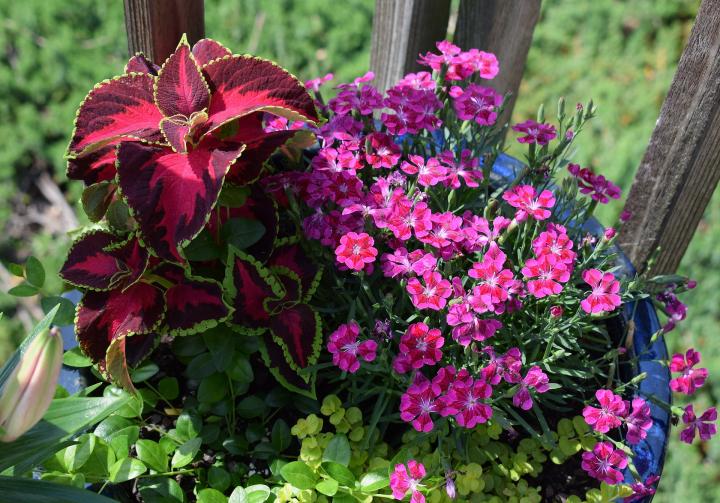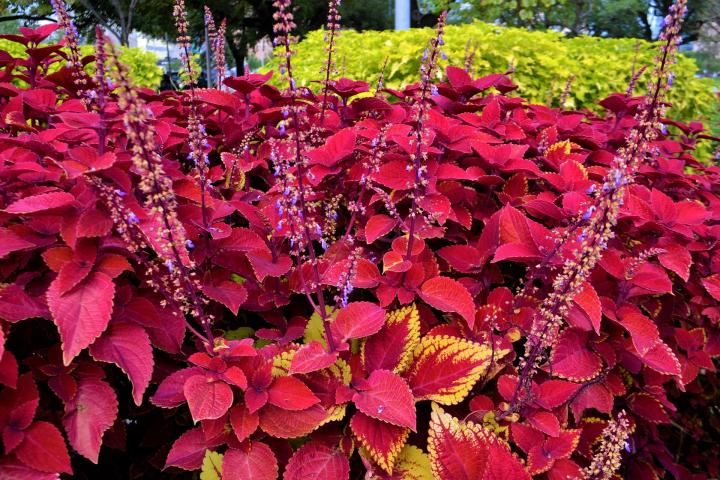
Photo Credit
zzz555zzz/Shutterstock
Subhead
How to Plant, Grow, and Care for Coleus Plants
Read Next
Types
There are more than 600 varieties of coleus to choose from!
Coleus for semi-shade:
- ‘Brilliancy’ has bright red leaves with green scalloped edges.
- ‘Fishnet Stockings’ has lime-green leaves with dark purple veins.
- ‘Mardi Gras’ is compact and has red, green and yellow leaves.
- ‘Japanese Giant’ has big burgundy leaves with pink and violet highlights.
- ‘Black Magic’: velvety, dark purple foliage with chartreuse scalloped edges; rounded form; 18 to 24 inches tall
- ‘Dark Star’: deep purple foliage; upright form; 24 inches tall
- ‘Freckles’: bronze and orange splashes on pale yellow leaves; upright form; 12 to 24 inches tall
- ‘India Frills’: lime-green foliage with splashes of orange, pink, and purple; compact, trailing form; 6 to 12 inches tall
Coleus for partial to full sun:
- ‘Pineapple’ has bright lime-green leaves with burgundy stems.
- ‘Solar Shadow’ has green leaves with dark red serrated edges and tips.
- ‘Alabama Sunset’ has brick-red leaves with yellow edges.
- ‘Burgundy Wedding Train’: heart-shape burgundy leaves outlined in lime green; trailing habit; 12 to 18 inches tall
- ‘Redhead’: bright red foliage; rounded form; 18 to 24 inches tall
Gardening Products
west central fl. in winter will the leafs fall off. thank you
How do I prune my coleus so it will get bushy
Hi Regina,
You will want to prune your coleus plants by removing any stem at the point where two stems or two leaves are growing from it. You can either pinch them back or cut them with pruners. By doing so, your coleus will grow two new branches from that point on the stem to give it a bushy appearance instead of having those stems simply grow straight up. Depending on the size of your plant, you can be aggressive when pinching it back to stimulate lots of new growth.
I pinched off a few stems and put them in water. I thought they would root?
I seem to have a white fungus on my plant cuttings that I have in small pots, how do I remedy this? Do not want to lose them












Comments